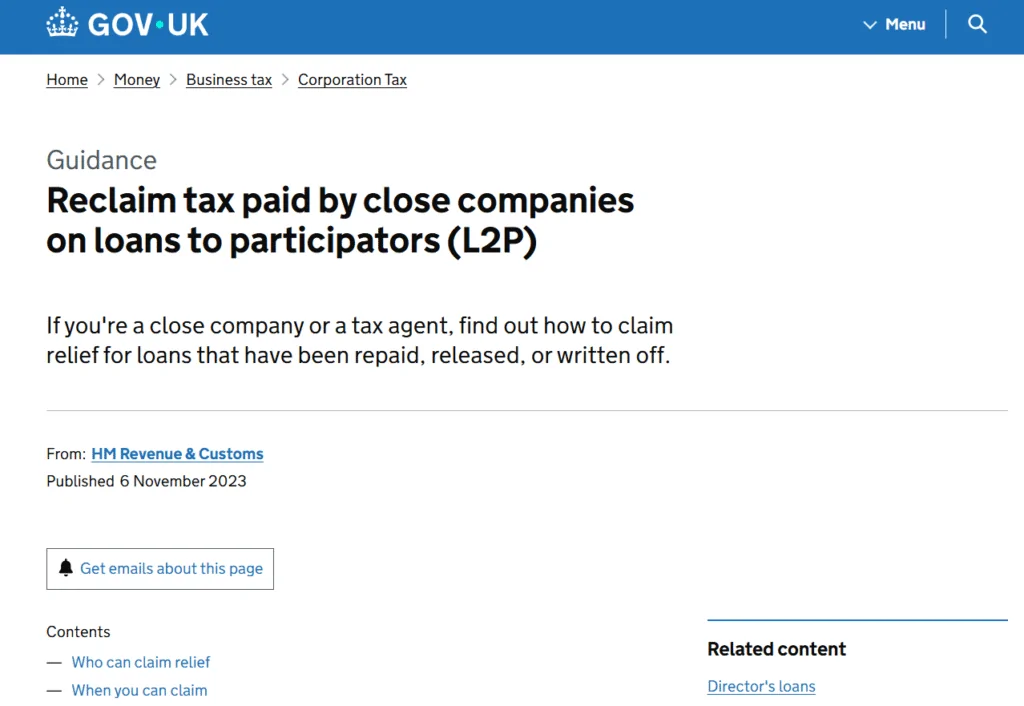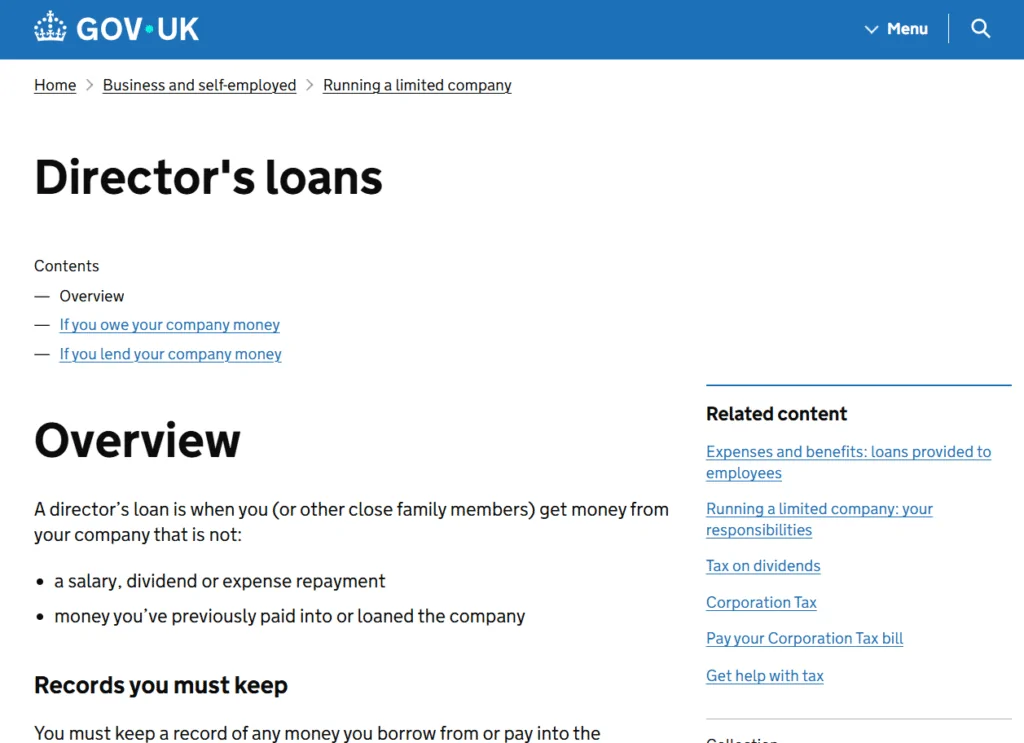S455 Tax Refund – Complete Guide to Reclaiming Director’s Loan Tax from HMRC
Helping Company Directors Reclaim Overpaid S455 Tax
When your limited company lends money to you or another shareholder, special tax rules apply. These loans are called Director’s Loans, and HMRC may charge a temporary tax known as Section 455 tax if the loan is not repaid within nine months of your company’s year-end.
The good news? You can reclaim that tax once the loan is repaid — and that’s where the S455 Tax Refund process comes in.
This complete guide explains what S455 tax is, how it works, how to reclaim it, and how Audit Consulting Group can make the process simple, accurate, and HMRC-compliant.
What Is Section 455 Tax?
Section 455 of the Corporation Tax Act 2010 applies when a close company (usually a small limited company controlled by five or fewer shareholders) lends money to its directors or participators.
If that loan isn’t repaid within nine months and one day after the end of the company’s accounting period, the company must pay S455 tax to HMRC.
The current rate (as of 2025) is 33.75% of the outstanding loan amount.
This is not a permanent tax — it’s designed to discourage company owners from withdrawing profits as “loans” instead of salaries or dividends.
When Can You Reclaim S455 Tax?
You can reclaim S455 tax once the loan has been fully repaid, written off, or released.
The timing depends on when the repayment happens:
-
If the loan is repaid within nine months of the company’s year-end, the tax is never actually payable.
-
If it’s repaid after that nine-month window, you can reclaim the tax nine months and one day after the end of the accounting period in which repayment occurred.
In simple terms:
You pay S455 when the loan exists; you reclaim it once the loan is cleared.
Who Can Claim an S455 Tax Refund?
You can claim if:
-
Your company is a close company (most small UK limited companies are).
-
You or another shareholder/director borrowed money from the company.
-
The loan was repaid, written off, or cleared by dividend or salary.
-
You previously paid S455 tax to HMRC.
The refund goes to the company, not the individual director.
Documents You’ll Need to Claim
Before submitting a refund claim, gather the following:
-
Company UTR (Unique Taxpayer Reference)
-
Corporation Tax return (CT600) and computations for relevant years
-
Loan account records (director’s loan ledger)
-
Proof of repayment, write-off, or dividend journal entries
-
HMRC payment reference for the original S455 payment
-
Bank statements showing repayment or offset transaction
Having accurate records is essential — HMRC will not issue a refund without clear evidence that the loan was repaid.
How to Reclaim S455 Tax – Step by Step
Step 1: Verify the Repayment
Check your company’s accounting records to confirm when and how the director’s loan was repaid, cleared by dividend, or written off.
Step 2: Complete Form L2P
You need to complete Form L2P.
Official link: https://www.gov.uk/guidance/reclaim-tax-paid-by-close-companies-on-loans-to-participators-l2p
Step 3: Provide Supporting Evidence
Attach:
-
Copy of the CT600 for the year S455 was paid
-
Copies of the company accounts
-
Director’s loan account reconciliation
-
Proof of repayment or offset
Step 4: Send the Claim to HMRC
Post your completed claim to:
HMRC – Corporation Tax Services, BX9 1AX, United Kingdom
Keep copies of everything for your company’s records.
Step 5: Wait for Processing
HMRC generally takes 8–12 weeks to review and process S455 refund claims.
If additional clarification is needed, they will contact you or your accountant.
How the Refund Works
Once approved, HMRC refunds the S455 payment directly to your company’s business bank account or offsets it against other Corporation Tax liabilities.
If the loan is repaid in stages, partial refunds can be claimed for each repayment period.
Common Reasons for Delay or Rejection
-
Incomplete or missing Form L2P
-
Incorrect UTR or payment reference
-
No proof of repayment provided
-
Discrepancies between CT600 and loan ledger
-
Submitting too early (before the qualifying nine-month window)
Example Timeline
Let’s say your company’s year-end is 31 March 2023, and a £10,000 loan to a director wasn’t repaid.
You pay S455 tax of £3,375 in January 2024 (nine months after year-end).
If the loan is repaid on 15 June 2024, you can reclaim that S455 tax from 1 January 2025 (nine months after the repayment period).
Accounting and Tax Treatment
When S455 tax is paid, it is treated as a recoverable Corporation Tax asset in your company’s accounts.
It doesn’t affect your Profit & Loss directly, but it does appear as a debtor on your balance sheet until refunded by HMRC.
Once refunded, you must reverse that debtor entry.
Important: Avoid “Bed and Breakfasting” Loans
HMRC closely monitors cases where a director repays a loan briefly before taking out another soon after (known as “bed and breakfasting”).
If a new loan is taken within 30 days of repayment, HMRC can deny the refund.
Always make genuine repayments and avoid re-borrowing within this period.
Why Work with a Professional Accountant
Reclaiming S455 tax is more technical than it seems. Incorrect or poorly supported claims often result in HMRC delays.
A professional review ensures:
-
Accurate calculation of refundable tax
-
Proper loan account reconciliation
-
Correct form completion (L2P)
-
Timely claim submission
-
Tracking and communication with HMRC until refund is received
At Audit Consulting Group, we assist UK limited companies in reclaiming S455 efficiently — saving time and ensuring compliance.
Case Studies
Case 1 – Small Limited Company Director Refund
Client: Thomas B., Marketing Agency Director
Issue: £25,000 director’s loan not repaid within nine months.
Result: Loan repaid later; Audit Consulting Group filed L2P claim. £8,437 refunded from HMRC within 10 weeks.
Case 2 – Dividend Offset
Client: L. Khan, Tech Consultancy
Issue: Director’s loan cleared via dividends declared post-year-end.
Result: Partial S455 refund of £3,100 processed by HMRC in 11 weeks.
Case 3 – Family-Owned Business
Client: R&D Logistics Ltd
Issue: Multiple short-term director advances incorrectly classified.
Result: Reconciled all accounts, submitted amended CT600 and L2P; full refund of £12,150 received in 9 weeks.
Frequently Asked Questions (FAQ)
Q1: How long does an S455 refund take?
Usually 8–12 weeks from submission, depending on HMRC’s workload.
Q2: Can I claim if the loan was written off?
Yes, but only once it’s formally written off and recorded in the company’s accounts.
Q3: What if the company is dormant now?
You can still claim, but HMRC may request extra documentation showing the repayment.
Q4: Is the refund automatic?
No — you must file Form L2P. HMRC will not refund S455 automatically.
Q5: How far back can I claim?
Claims can be made up to four years after the end of the accounting period in which repayment occurred.
Q6: Can I offset the refund against Corporation Tax?
Yes, if your company owes Corporation Tax, HMRC may offset the refund instead of paying it out.
Q7: Can I reclaim partial amounts?
Yes. If you repay the loan in stages, you can claim partial refunds for each repayment.
When to Seek Help
If you’re unsure about your director’s loan account or previous CT600 submissions, professional guidance can save time and prevent HMRC rejections.
We’ll review your records, prepare the L2P form, and manage communication with HMRC until your refund is safely received.
Get Expert Help with Your S455 Tax Refund
We specialise in helping directors and small company owners recover S455 tax quickly and accurately. Whether your loan was repaid, written off, or offset, our team ensures the claim is correct, compliant, and complete.
Official guidance:
https://www.gov.uk/directors-loans
https://www.gov.uk/hmrc-internal-manuals/company-taxation-manual/ctm61505







